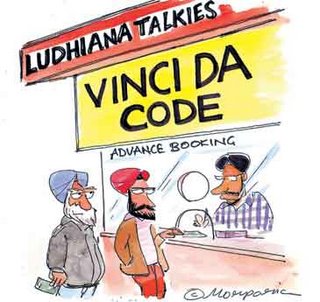Swamiye Sharam Ayyappa
This post is in reponse to a post by blogger Neha Vishwanathan on the latest controversy surrounding actress Jaimala’s claims that she had entered Sabarimala temple.
Dear Neha,
I have read many of your posts and I appreciate your opinion generation efforts against gender-bias through your blog. But I think you have got it really very wrong this time. When you made statements like “Cut state funding” (this year’s revenue was Rs 62.5 Crores, last year 57.75 Crores) it became clear that your knowledge on the subject is very limited(which you have duly mentioned in the beginning of your post). In my opinion, when one is not fully aware of the subject, its custom, history and significance to the people concerned, then its better not to voice your opinion, let alone pass a judgement, more so when it’s a sensitive and personal matter like religion. When you say women should be allowed entry to Sabarimala, you are hurting the religious sentiments of devotees of Lord Ayyappa which (quite ironically) includes women too! And that exactly is why I disagree with your take on it.
Lord Ayyappa is believed to be a celibate hermit. As per the beliefs, proximity of young woman will be detrimental to the sanctity of the place. Even men who are planning to visit Sabarimala should observe a strict regime for 41 days viz. waking up early and taking breakfast only after taking bath and morning prayers, not shaving or taking hair cuts, walk bare-foot, wear only black mundu, follow strict vegetarian diet, total abstinence from sex and sexual thoughts. Here’s the complete list. These are beliefs of believers. And when I say believers, it includes woman also. I don’t remember any of the womenfolk in my family protesting against their non-entry to the temple. In fact the situation is quite contrary. Lord Ayyappa is so revered among malayalees that an average young woman considers the very thought of entering the temple blasphemous. Its not that women cannot worship Lord Ayyappa. There are numerous Ayyappa temples across the world and women are allowed in most of them. In case of Sabarimala, legend has it that Lord Ayyappa himself had ordered King Rajasekara that only those who observe vritham should be allowed to enter the holy sanctum. And as part of that, young women are not allowed in the temple premises.
When I asked my mother if she doesn’t feel like visiting Sabarimala, she said she will after she turns 50. Before that she shouldn’t and she won’t. So even though I appreciate your intention of voicing your thoughts for gender equality, I think this is a case of misplaced enthusiasm. Its not about gender discrimination, it’s a matter of faith. Various religions have their customs. To an outsider, these may seem silly, illogical. But hey, is belief in God logical? Does that stop us from believing in God? I hope you get my point. When it comes to matters of faith, I am of the firm belief that you should find peace in your own faith(it can even be aethism) and at the same time not question others faith. Questioning another person’s religion and beliefs are serious offence, in my opinion.
In case you are looking for more info on Lord Ayyappa, http://www.sabarimala.org/ is a good website.
-Swamiye Sharanam Ayyappa-

